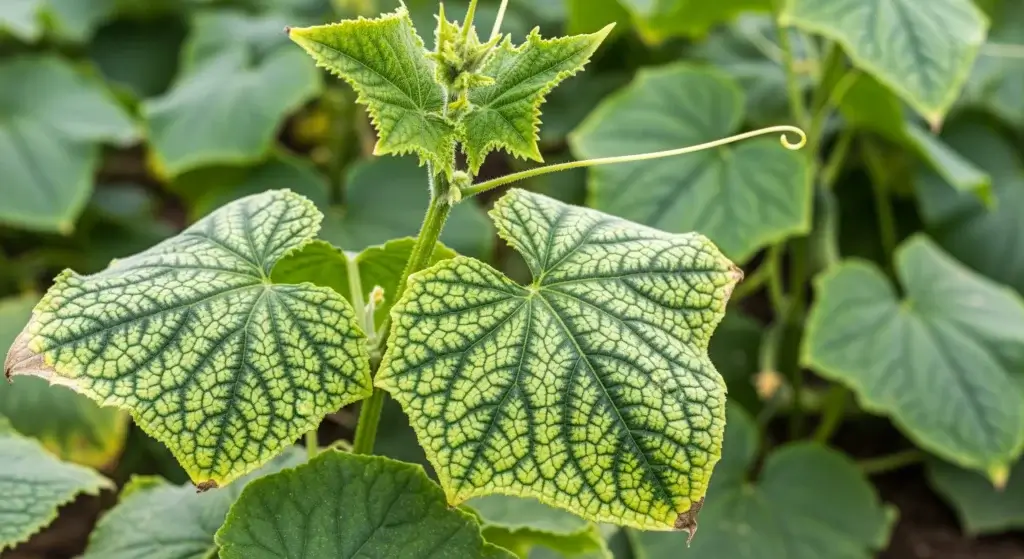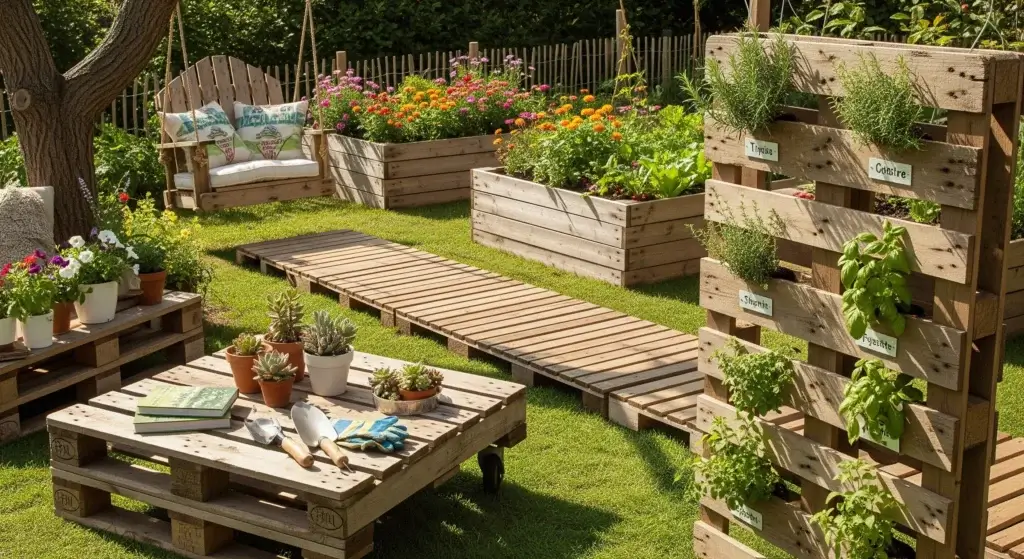
Garden pests can wreak havoc on your plants, causing damage and reducing yields.
Instead of relying on chemical pesticides, consider DIY garden pest traps as a safe and environmentally friendly alternative.
In this blog post, we’ll explore common garden pests and their DIY traps, the benefits of DIY traps, and important considerations for their use.
Common Garden Pests and DIY Traps
Slugs and Snails
The Problem
Dealing with garden pests like slugs and snails can be a frustrating challenge for gardeners.
These slimy creatures can wreak havoc on plants by munching through leaves, flowers, and stems, leaving behind a trail of slime and unsightly damage.
- Read also: Homemade Plant Insect Spray for a Healthy Garden
- Read also: Eco-Friendly Pest Control – How To Make a Natural Pesticide
DIY Trap
Beer trap
Creating a beer trap to deal with slugs and snails in your garden is a simple and effective method.
Here’s a breakdown of the process:
- Gather your materials: You’ll need a shallow container like a yogurt container or plastic cup. Make sure it’s clean and has no residue. You’ll also need some beer and a pinch of yeast.
- Prepare the container: Take your container and ensure it has no holes. Holes would let the beer seep out, making the trap less effective. If needed, poke some small holes near the top for the scent to escape.
- Pour the beer: Fill the container with beer, leaving about an inch of space from the top. It doesn’t have to be fancy beer; in fact, cheap beer works just fine. The scent of the beer is what attracts the slugs and snails.
- Add yeast: Sprinkle a pinch of yeast into the beer. Yeast kickstarts fermentation, which enhances the scent, making it even more irresistible to slugs and snails.
- Set the trap: Bury the container in the soil near the plants that are being attacked by slugs and snails. Make sure the rim of the container is level with the ground. This makes it easier for the pests to crawl in.
- Check and refill: Check the trap regularly, especially after rain. Rain can dilute the beer, making it less effective. If the beer level is low or if it’s diluted, refill it. You want the beer to remain fresh and aromatic to continue attracting the pests.
- Dispose of the pests: Once the trap has done its job and caught slugs and snails, you’ll need to dispose of them. You can either discard them far away from your garden or find another method of disposal that suits you.
- Monitor and adjust: Keep an eye on your beer trap and adjust its placement if needed. If you notice it’s not catching as many pests as before, you might need to move it to a different location.
Sugar water trap (Alternative Bait)
Creating a sugar water trap is another method to lure slugs and snails away from your prized plants. Here’s how to set it up:
- Gather your materials: You’ll need a shallow container, sugar, and water. Make sure the container is clean and has no residues that could interfere with the effectiveness of the trap.
- Mix the solution: In the container, mix sugar and water to create a sweet solution. There’s no need to measure precisely; a few spoonfuls of sugar dissolved in water should suffice. The sweet scent will attract the slugs and snails to the trap.
- Placement: Once you’ve mixed the solution, place the container near the plants that are being targeted by slugs and snails. Make sure it’s within easy reach for the pests to crawl into.
- Check regularly: Unlike beer traps, sugar water traps may require more frequent monitoring. Check the trap regularly to see if any slugs or snails have been lured in..
- Dispose of the pests: Once the trap has caught slugs and snails, dispose of them accordingly. You can relocate them away from your garden or find another suitable method of disposal.
- Adjust as needed: If you find that the sugar water trap isn’t as effective as you’d like, you can experiment with adjusting the concentration of the solution or try placing the trap in different locations around your garden.

Earwigs
Dealing with earwigs in your garden can be a nuisance, as they munch on leaves, flowers, and stems while potentially spreading diseases.
Here’s a simple DIY trap to help control their population:
DIY trap
Shallow container trap with bait
- Materials needed: You’ll require a shallow container with a lid (like a small plastic tub), oil, soy sauce, and water. Ensure the container has a lid to prevent rainwater diluting the bait.
- Prepare the bait: Mix oil and soy sauce together to create a tempting bait for the earwigs. The scent of the soy sauce will attract them, while the oil will trap them.
- Add water: Pour water into the shallow container. This helps create a barrier that the earwigs can’t escape from once they’re attracted to the bait.
- Placement: Position the traps near the plants that are being affected by earwigs, but keep them away from areas where children and pets frequent. Place them strategically in areas where you’ve noticed earwig activity.
- Check regularly: It’s essential to monitor the traps regularly. Earwigs can be quick to find their way in, so checking every day or two is advisable. If you notice the traps are full or the bait has become diluted, it’s time to empty and refill them.
- Dispose of caught pests: Once you’ve caught some earwigs in the trap, dispose of them to prevent reinfestation. You can either release them far from your garden or dispose of them in a way that suits you.
Aphids
Aphids can wreak havoc on your plants, causing yellowing, curling, and stunted growth. Here’s a DIY trap to help manage these pesky pests:
DIY trap
Sticky trap (petroleum jelly on plate/cup)
- Materials needed: Gather a flat plate or cup and petroleum jelly. Ensure the plate or cup has a sticky surface, such as one coated with adhesive or a sticky trap.
- Prepare the trap: Spread petroleum jelly generously on the sticky surface of the plate or cup. The sticky texture will trap aphids when they come into contact with it.
- Placement: Position the traps near the affected plants, but away from areas frequented by children and pets. Consider placing them strategically around the garden where aphids are most active.
- Attractant color: Aphids are attracted to yellow and white colors, so using plates or cups of these colors can increase the effectiveness of your traps. Consider painting or covering the traps with yellow or white materials to enhance their attractiveness to aphids.
- Monitor regularly: It’s crucial to check the traps regularly to assess their effectiveness. Aphids can quickly accumulate on the traps, especially during peak infestation periods. If you notice the traps are full or the petroleum jelly has become less sticky, it’s time to replace or replenish them.
- Dispose of caught aphids: Once aphids are trapped, dispose of them promptly to prevent reinfestation. You can remove them manually or rinse the traps with water to remove the pests. Be sure to dispose of the aphids away from your garden to prevent them from returning.

Important Considerations
Considering safety, effectiveness, and complementary strategies is crucial when implementing DIY pest control methods in your garden:
Safety
It’s essential to prioritize safety when dealing with pest control, especially in areas accessible to children and pets.
Opt for non-toxic materials when creating DIY traps to minimize any risks.
Additionally, place traps in locations where children and pets are unlikely to encounter them, such as raised planters or behind foliage.
Effectiveness
While DIY traps can be effective in managing pest populations, they may require more frequent monitoring and maintenance compared to store-bought options.
Keep an eye on your traps regularly to ensure they remain functional and catch pests efficiently.
If you notice a decline in effectiveness, consider adjusting your trapping method or supplementing it with other pest control strategies.
Complementary strategies
DIY traps work best when used alongside other pest control methods to create a comprehensive approach.
Encouraging beneficial insects, such as ladybugs and lacewings, can help naturally control pest populations by preying on aphids, earwigs, and other garden pests.
Additionally, practicing good garden hygiene, such as removing debris and weeds, can reduce hiding places and breeding grounds for pests.

Benefits of DIY Traps
DIY traps offer several benefits that make them a popular choice for gardeners looking to manage pests in a cost-effective, customizable, and environmentally friendly manner:
Cost-effective
One of the significant advantages of DIY traps is their affordability.
By using materials that are readily available and often inexpensive, DIY traps can be much more budget-friendly compared to store-bought options.
This makes them accessible to a wide range of gardeners, regardless of their budget constraints.
Customizable
DIY traps can be tailored to target specific pests, allowing gardeners to address their unique pest problems effectively.
Whether you’re dealing with aphids, earwigs, or moles, you can customize your traps to attract and capture the pests plaguing your garden.
Environmentally friendly
Unlike store-bought traps that may rely on chemical pesticides, DIY traps typically do not involve the use of harmful chemicals.
This makes them a safer option for the environment, as well as for those who may come into contact with the traps, including children and pets.
Reusable
Many DIY traps can be reused multiple times, reducing waste and the need for constant replacement.
By simply emptying and resetting the traps as needed, gardeners can extend their lifespan and maximize their effectiveness over time.
Sustainable
DIY traps can be part of a larger sustainable gardening strategy, which may include practices such as crop rotation, companion planting, and natural pest control methods.
By incorporating DIY traps into your overall gardening approach, you can promote a healthier, more balanced ecosystem in your garden while reducing reliance on chemical pesticides.

- Read also: Step by Step Tips: DIY Moss Pole for Indoor Plants
- Read also: DIY Guide: Homemade Compost for Growing Broccoli
Conclusion
Utilizing DIY garden pest traps presents a safe and eco-friendly approach to safeguarding your plants from common pests.
Through grasping the issue at hand and deploying efficient DIY traps, you can uphold a garden that thrives with health.



